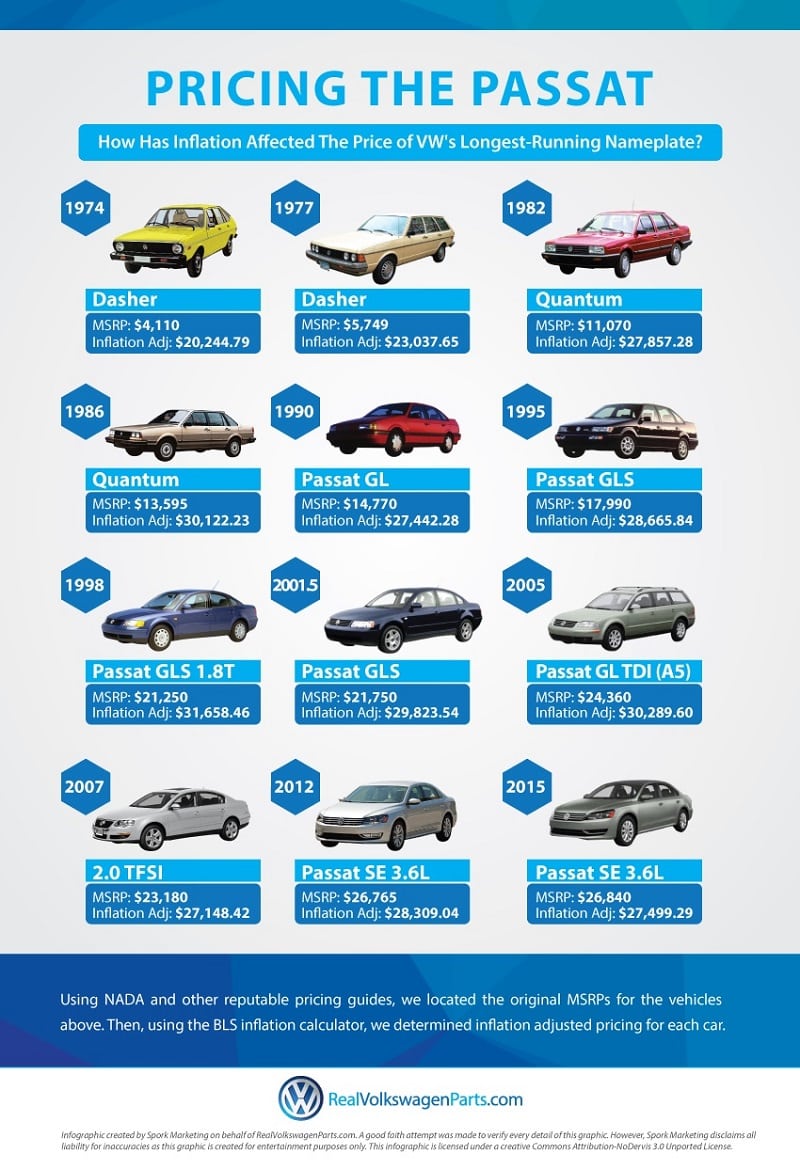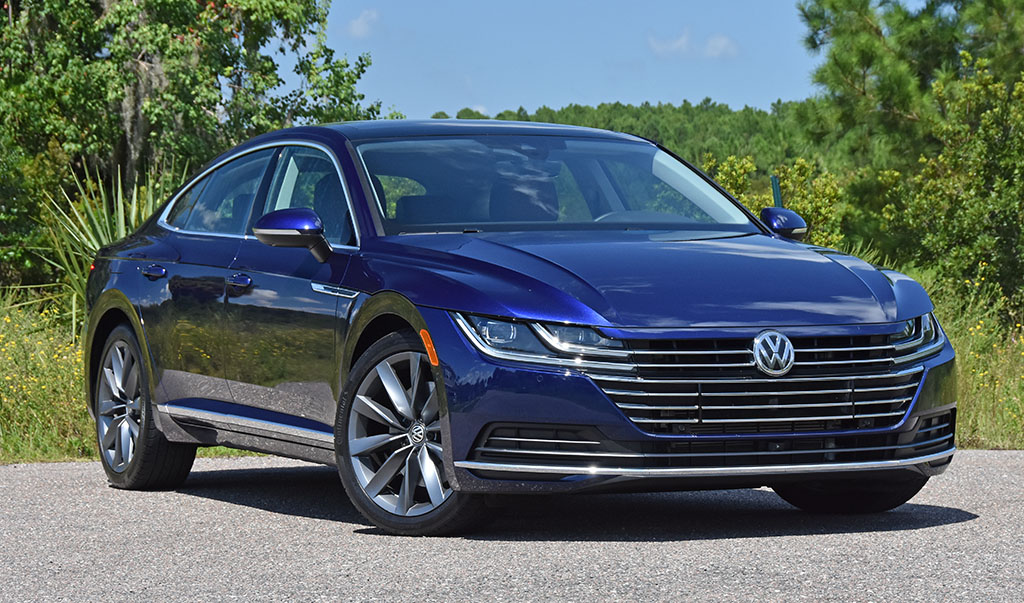A new infographic from RealVolkswagenParts.com shows how the price of the VW Passat has changed since 1974, when adjusted for inflation. VW’s longest running nameplate, the first American iteration of the Passat was introduced during a tough recession. The infographic tracks that rise and fall of the cost of a VW Passat in the years that followed, revealing how Volkswagen has worked to strike a balance between costs and features.
The Passat was introduced during a difficult time, both for Volkswagen and the US economy. The Beetle’s heyday was rapidly coming to a close, the US inflation rate was at 11.04%, and gas prices were historically very high. Volkswagen needed a new front wheel drive car to compete with economical imports from Datsun and Honda. In 1974, VW started offering front wheel drive cars with water-cooled engines.
“The B1 platform supported the longitudinal engine on the front-wheel Audi Fox, and that setup was unusual,” says Bob Cockerham, parts manager at RealVolkswagenParts.com. “But it worked and the car was popular, so Volkswagen used the platform to build something more affordable. That’s how the first Passat – then known as the Dasher – was created.”
VW had the platform but needed a design that was not a Beetle but definitely a Volkswagen. They hired Giorgetto Giugiaro, and the Dasher’s fastback look was born. Despite luxurious extras and good fuel economy, the Dasher’s high price contributed to slowing sales. Sales dropped from 37,000 in 1974 to about 20,000 per year for the remainder of the decade.
Volkswagen, continuing to look for a balance between luxury and economy, moved the design for the second generation Passat in-house. Production ended for the Dasher to make room for the Quantum, which was released in 1982. The Quantum wasn’t much of a success either, selling only 9,000 units its first year on the U.S. market.
“Although the first Quantum had an Audi-based engine, it only had 74 horsepower,” says Cockerham. “It wasn’t fast, and it wasn’t a very good looking car. Volkswagen tried adding a turbocharged diesel engine and some even bigger engines throughout the eighties, but the car never caught on.”
The Quantum’s last model year was 1988. VW took a year off to regroup and released the latest version of VW’s upmarket family car – now called the Passat – in 1990. For the new generation, the engine was set transversely, and the engineering was no longer just like an Audi. Instead, VW added the same engine then used in the Golf GTI. The 1990 Passat sold almost 18,000 units in the U.S. that year. Priced under $15,000, VW’s Passat was effectively riding the luxury-economy line.
When the fourth generation of Passat arrived, it returned to its roots. Based on the Audi A4, drivers now had three engine choices and all were mounted longitudinally like the early models. Sales grew almost every year during this generation, and the Passat was finally a popular automobile in the U.S.








